project
ITALIAN ARTISTS NEED OUR HELP
Italy is one of the countries worst affected by the COVID-19 pandemic, and its cultural sector is in a state of emergency. No public program of support for artists or special funding for contemporary art institutions has been created to date. And while many public and private initiatives have been springing up in other European countries to offer financial assistance to artists, Italy has yet to take action.
Lo schermo dell’arte, a non-profit cultural association that explores the relations between film and contemporary art, is organizing a network of individuals and institutions to provide support through a fundraising campaign that will help finance the production of original video works by young Italian artists.
One hundred percent of the funds that are raised will be allocated, through a public call, to young Italian artists whose projects have been put on hold by the emergency. One limited-edition of each of the video works produced through this campaign will be donated to the permanent collection of GAMeC – Galleria d’Arte Moderna e Contemporanea, Bergamo. This decision will not only add to Italy’s public cultural heritage, but will support a local institution in the part of the country that has been worst hit by the virus.
With their special way of looking at the world, artists have always helped us document and grasp the most complex moments in human experience. Over the last few weeks, they have been streaming their works for free, donating them to fundraisers, and contributing to the digital programming of art institutions.
We can’t just keep asking, it’s time to give back!
WHY IS IT IMPORTANT TO SUPPORT ARTISTS?
Art is a cornerstone of our identity, an essential record of the present, and a vital part of our economy. In Italy, cultural and creative enterprises account for 10.1% of the GDP and employ 10.3% of the population. If it weren’t for artists, museums, festivals and cinemas would have nothing to show. In these months of isolation, their work has consoled and sustained us. It has become very clear that we may be able to survive without art, but we can’t really live. Because art nourishes the soul.
Artists have yet to be recognized as a professional category in Italy, so they cannot count on any form of assistance or social safety net. At the moment, their sources of revenue-exhibitions, calls, residencies, sales-are almost entirely frozen, and social distancing measures make it very difficult to seek out new opportunities.
More than any other artistic medium, the moving image has proved capable of travelling beyond the exhibition space, taking full advantage of the digital technology available to us today. But artists who work in the language of video are the ones who depend the most on public support, institutional commissions, and private patronage, since there is usually a very limited market for their works.
Making an artist’s film or video is a collective process that involves other professional figures in addition to the artist: studio assistants, curators, producers, audio and video technicians, camera operators, set designers, etc. Providing aid to artists today will also preserve the entire production chain that revolves around their vision and offer new content to museums and non-profits, by supporting projects that have been put on hold by the crisis.
Up until now, top priority has been given to the health emergency when it comes to funding allocation, and rightly so. But now, unless it receives concrete support, there is a real danger that the entire art system will collapse. At this key juncture, nobody can make it all alone; artists have the capacity to describe our present and imagine our future, and that’s something we can’t risk losing.
Please share this campaign with your friends and on your social networks. This is a time when every donation counts.
Italian artists can’t wait any longer, we need to act now!
Campaign image: video still Centro di permanenza temporanea, 2007, by Adrian Paci, kindly given by the artist.
works
The four video works have been presented at the 14th edition of Lo schermo dell’arte. The works by Fassone, Favaretto, and Shanta are presented at the Festival as world premieres.
The four video works donated to the permanent collection of the GAMeC – Galleria d’Arte Moderna e Contemporanea di Bergamo, have been presented at the Gallery from March 11 to March 20, 2022 as part of the exhibition The Impermanent Colection #3.0.
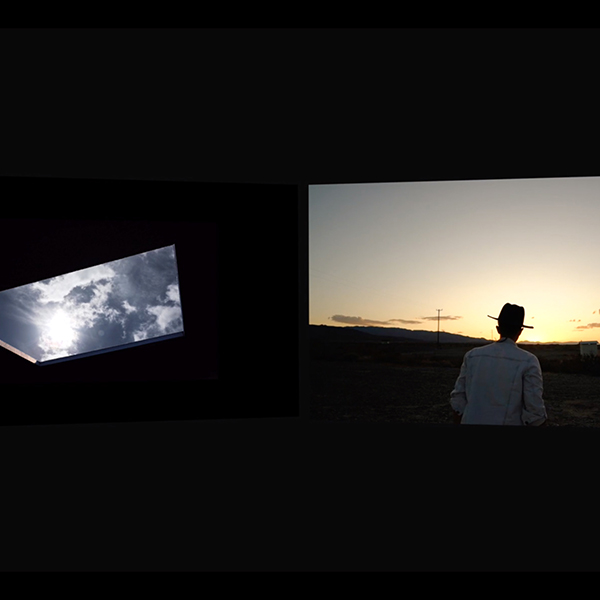
Pas De Deux/Pas Seul
by Roberto Fassone, 2021, 20'21"
The film is conceived as a surreal choreography and exists in both a single-channel and dual-channel version. Stolen images, YouTube videos, archival footage, and 3D renders tell the unfolding of a psychedelic journey in four chapters. A continuous flow that passes through upside-down forests, poems by Yoko Ono, colorful tennis matches, short documentaries, vampires, and crystals.
The film is produced in collaboration with Azienda Speciale Palaexpo – Mattatoio | Project Prendersi Cura.
The film was in competition at the 53rd Visions du Réel International Film Festival in Nyon.
The two-channel version Pas de deux had its world premiere at the Mattatoio in Rome from 18 to 27 March 2022.
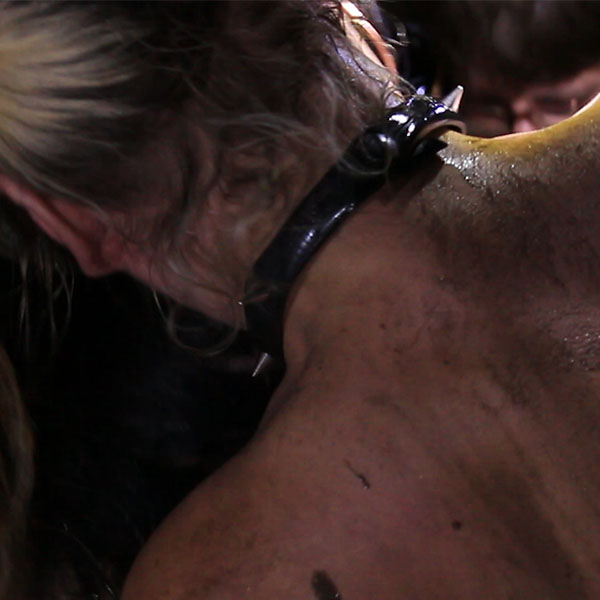
The Pornographer
by Beatrice Favaretto, 2021, 12'
The video was born within the Berlin post-porn scene thanks to the collaboration with the director and trans feminist activist Emy Fem. The artist has worked on the set of Fem’s last film and from this experience has produced the work The Pornographer in which an abstract tangle of bodies with fluid and indefinite sexuality becomes an invitation to confront our limits by welcoming the value of diversity.
The work was screened at the Filmmaker Festival in Milan (12-21 November 2021).
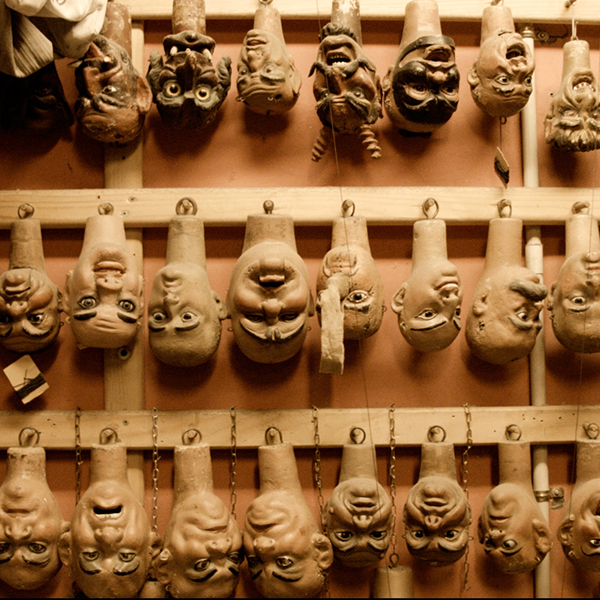
Diteggiatura
by Riccardo Giacconi, 2021, 18’
The film narrates a year spent by the artist in Atelier Colla, the largest and oldest puppet company in the world active for over three centuries, showing the rituals of a community called to accompany the existence of these anthropomorphic objects. The images are accompanied by the voice of the actress Silvia Costa who interprets a text written by an artificial intelligence.
The film is made in collaboration with Andrea Morbio and the Carlo Colla & Figli Puppet Company, and coproduced by Slingshot Films.
The film premiered at Giornate degli Autori / Notti Veneziane at the Venice International Film Festival on 2 September 2021.
The work was screened at the 50th International Film Festival Rotterdam and at the Filmmaker Festival in Milan (12-21 November 2021).
A still of the work was published on the cover of Millennium Film Journal issue no. 77 ‘RIFTS’ (Spring 2023), while the film was screened at a festival organised by the journal at the School of Visual Arts in New York on 25 April 2023.
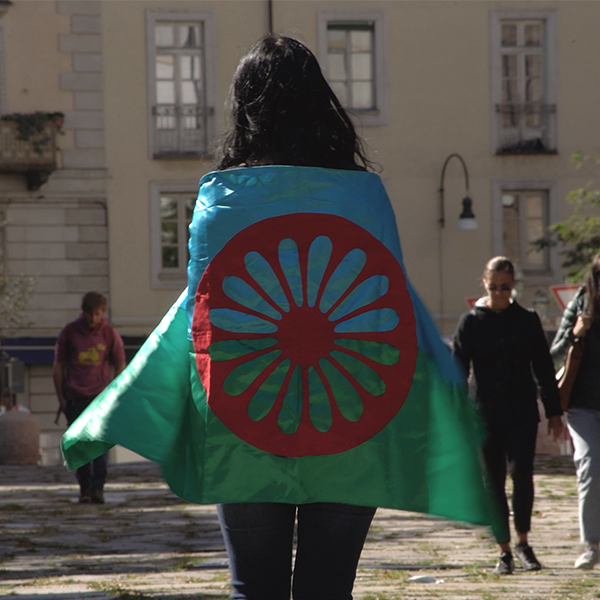
Talking About Visibility
by Caterina Erica Shanta, 2021, 31’24’
The film is the result of a collective film workshop the artist held in Turin, Italy, involving refugees and people with a migrant background. Together they began to weave a story that has its roots in the films each of them loved during their childhood. In the video, cinematographic memories dialogue with scenes filmed in the city, the place where we live together today.
The film is produced in collaboration with Artissima and Torino Social Impact.

Beatrice Favaretto
1992, Venezia
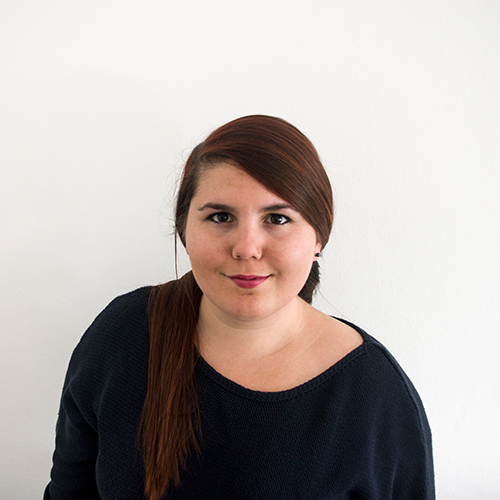
Caterina Erica Shanta
1986
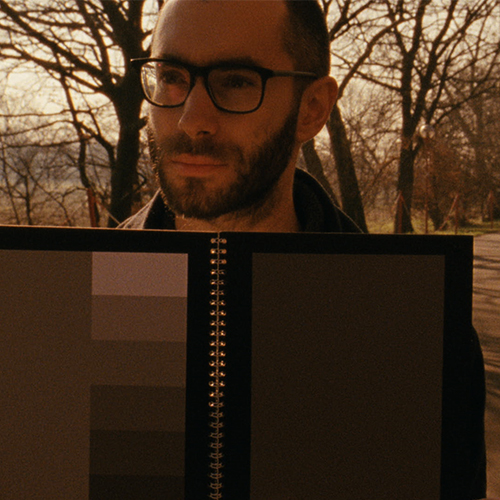
Riccardo Giacconi
1985

Roberto Fassone
1986
jury
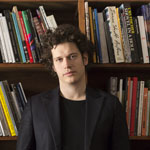 Leonardo Bigazzi
Leonardo Bigazzi
(Fiesole, 1982) works as a curator at Lo Schermo dell’Arte Film Festival since its first edition in 2008, where he has been responsible for special projects with the artists Hito Steyerl, Hassan Khan, Omer Fast, Hiroshi Sugimoto and Melik Ohanian. He is the co-director of Feature Expanded (2015- ) and the curator of VISIO – European Programme on Artists’ Moving Images (2012- ), to which over 150 artists have participated. Recently curated exhibitions: VISIO Moving Images After Post-Internet (Palazzo Strozzi, Florence), Invisible Cities (MAXXI, Rome), Petrit Halilaj Shkrëpetima (Fondazione Merz, Turin; Paul Klee Zentrum, Bern; Runik, Kosovo), European Identities. New Geographies in Artists’ Film and Video (Le Murate, Florence), Directing the Real. Artists’ Films and Video in the 2010s (Palazzo Medici Riccardi, Florence; Passerelle Centre d’art contemporain, Brest). From 2014 to 2016 he was curator at Museo Marino Marini in Florence where he curated the solo shows of Rayyane Tabet and Pablo Bronstein among other projects. In 2016 he co-curated the first edition of La Nuite blanche de Monaco. He has been the project manager and curatorial advisor of the artist Petrit Halilaj for 12 exhibitions among which his solo-show at the New Museum in New York and his presentation at the 57. Biennale di Venezia, awarded with the Special Mention of the Jury. He is part of the acquisition committee of the FRAC Bretagne (2020-2022). In 2017 he was part of the acquisition committee of the FRAC Champagne-Ardenne. He holds an M.A. in Science for the Study and Conservation of Art at the University of Florence and has lectured in several Universities, Art Academies and contemporary art Institutions.
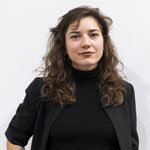 Lucrezia Calabrò Visconti
Lucrezia Calabrò Visconti
Is an independent curator who lives and works in Italy. Since 2017 she is the curator of the Young Curators Residency Programme of Fondazione Sandretto Re Rebaudengo, Turin. Recent projects include: No Space, Just a Place (associate curator) with Myriam Ben Salah, Daelim Museum, Seoul (2020); Abstract Sex. We don’t have any clothes, only equipment with Guido Costa for Artissima, Turin (2019); Get Rid of Yourself (Ancora Ancora Ancora), Fondazione Baruchello, Rome (2019); Abracadabra, 6th International Biennale for Young Art, Moscow (2018); Umlaut. Il public programme per le arti contemporanee with Luigi Fassi and Stefano Collicelli Cagol (2018); Why Is Everybody Being So Nice?, De Appel and Stedelijk Museum, Amsterdam (2017); Good Luck, See You After the Revolution, Uva, Amsterdam (2017), Dear Betty: Run Fast, Bite Hard!, GAMeC, Bergamo (2016). In 2018 and 2019 she was the curator of the New Entries section for emerging galleries in Artissima, Turin. In 2018 she founded the educational and performative platform The School of the End of Time with artists Ambra Pittoni and Paul-Flavien Enriquez-Sarano. She gained education at De Appel Curatorial Programme, Amsterdam; CAMPO12, Fondazione Sandretto Re Rebaudengo, Turin; IUAV, Venice; Artists Space, New York. Her writings were published in museum catalogues and magazines. She edited publications among which recently Shifting Views on Italian Art. The Curatorial Residency as a Research Model with Irene Calderoni for Fondazione Sandretto Re Rebaudengo and The New Work Times, publication of the exhibition The Artist is Present by Maurizio Cattelan at TSUM Museum, Shanghai (2019). She is a journalist registered at the Italian Order of Journalists since 2017.
 Sarah Cosulich
Sarah Cosulich
(Trieste, 1974) is artistic director of La Quadriennale di Roma and co-curator of the 17th Art Quadriennale which will open in October 2020 in Rome’s Palazzo delle Esposizioni.
She is also curator of the exhibition space MUT in Modena and the Mutina for Art programme of contemporary art support.
From 2012 to 2017 Cosulich was director of the international art fair Artissima in Torino and has worked as development advisor for Manifesta12 in Palermo. Cosulich studied in Washington D.C., Berlin and London and in 2003 she was assistant curator of Francesco Bonami at the 50th Venice Biennale. From 2004 to 2008 she was curator of the Villa Manin Center for Contemporary Art.
She has curated exhibitions for galleries and private collections. Among her writings there are monographic publications dedicated to Jeff Koons (2006) and Gabriel Orozco (2008) and she occasionally collaborates with international universities and art academies.
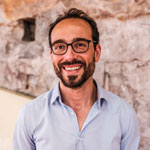 Lorenzo Giusti
Lorenzo Giusti
Art historian, exhibition and event curator, researcher in the field of contemporary artistic practices, Lorenzo Giusti is the Director of Bergamo’s GAMeC – Galleria d’Arte Moderna e Contemporanea. From 2012 to 2017 he served as Director of the MAN Museum in Nuoro, after working as a curator at the EX3 contemporary arts center in Florence. His special interests lie in the relationship between the historical avant-gardes and contemporary languages, as well as between ecology and the visual arts. He has staged shows dedicated to leading figures and movements from the history of 20th-century art, as well as curating contemporary art projects, collaborating with various institutions. In 2016 he joined the curatorial team of the Third Shenzhen Animation Biennale, and in 2018 that of the “curated by” festival in Vienna. He is the interim President of AMACI – Associazione dei Musei d’Arte Contemporanea Italiani.
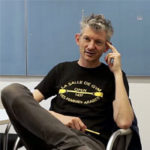 Andrea Lissoni
Andrea Lissoni
PhD, is from 2020 Artistic Director at Haus der Kunst, Munich. Formerly Senior Curator, International Art (Film) at Tate Modern, London and curator at Pirelli HangarBicocca, Milano (2011-2014), the co-founder of the independent artistic network Xing (2000) and co-director of the international festival Netmage in Bologna (2000-2013), in 2012 he co-founded Vdrome, an online screening program for artists and filmmakers. Among many other projects at Tate Modern he curated the Turbine Hall Commission 2016 Anywhen, by Philippe Parreno and the expanded exhibition Joan Jonas. He was the co-curator of the Biennale de l’Image en Mouvement The Sound of Screens imploding, Centre d’Art Contemporain Genève, 2018 and OGR, Torino, 2019.
Structure
HOW WILL THE FUNDS BE USED?
The fundraising campaign close on 15 June 2020 and raised the amount of € 27,000. At the end of the campaign, there was a public call open to all artists under 35 who are citizens or residents of Italy and whose artistic practice is focused on the medium of video.
The artists will be asked to submit a project proposal for an original video. The entire sum raised by the campaign will be allocated to one or more of these artists, selected by a jury made up of:
Leonardo Bigazzi, curator, Lo schermo dell’arte and Artists’ Film Italia Recovery Fund
Lucrezia Calabrò Visconti, independent curator
Sarah Cosulich, artistic director, La Quadriennale di Roma
Lorenzo Giusti, director, GAMeC, Bergamo
Andrea Lissoni, artistic director, Haus Der Kunst, Munich
Precedence will be given to projects that have been put on hold because of the crisis, whether for financial or logistical reasons, or ideas that have taken shape in these critical months and which explore the most pressing issues of our time.
The minimum budget for each production will be €5,000, up to a maximum of €10,000, including the artist’s fee. The jury will decide how much to allocate based on the available funds and the financial needs of each proposal.
Leonardo Bigazzi and the team from Lo schermo dell’arte will work in close contact with the winning artists, offering all necessary production support in the creation of the work.
The winning works will be presented at the Schermo dell’arte Film Festival in 2021 and at Italian and international art institutions and festivals. One limited-edition copy of each of the video works produced through this campaign will be donated to the permanent collection of GAMeC – Galleria d’Arte Moderna e Contemporanea di Bergamo.
ARTISTS’ FILM ITALIA RECOVERY FUND
Realised thanks to the contribution of Fondazione CR Firenze in the framework of PARTECIPAZIONE CULTURALE
Partners that have supported and promoted the project:
• AlbumArte
• Art House
• Blitz Valletta
• La Casa Encendida
• CASTRO
• Centro per l’arte contemporanea Luigi Pecci
• Cittadellarte – Fondazione Pistoletto
• Club GAMeC
• Collection von Kelterborn
• Collective
• CURA.
• Fondazione Donnaregina per le arti contemporanee
• Madre – Museo d’arte contemporanea
• Fondazione Merz
• Fondazione Palazzo Strozzi
• Fondazione Sandretto Re Rebaudengo
• FST-Fondazione Sistema Toscana
• FRAC Bretagne
• GAMeC – Galleria d’Arte Moderna e Contemporanea di Bergamo
• Han Nefkens Foundation
• ICA Milano
• In Between Art Film
• Institute of Contemporary Art
• Kunsthalle Basel
• LOOP Barcelona
• MACRO – Museo di Arte Contemporanea di Roma
• Magazzino Italian Art
• MAMbo – Museo d’arte moderna di Bologna
• MAN_Museo d’Arte Provincia di Nuoro
• Manifattura Tabacchi
• MART – Museo d’arte moderna e contemporanea di Trento e Rovereto
• Master MOVIES Moving Images Arts – Università Iuav di Venezia
• MYmovies
• nctm e l’arte
• NERO.
• Palazzo Grassi – Pinault Collection
• La Quadriennale di Roma
• Radio Papesse
• Senzacornice
• Seven Gravity Collection
• Triennale di Milano
• Tromsø Kunstforening
